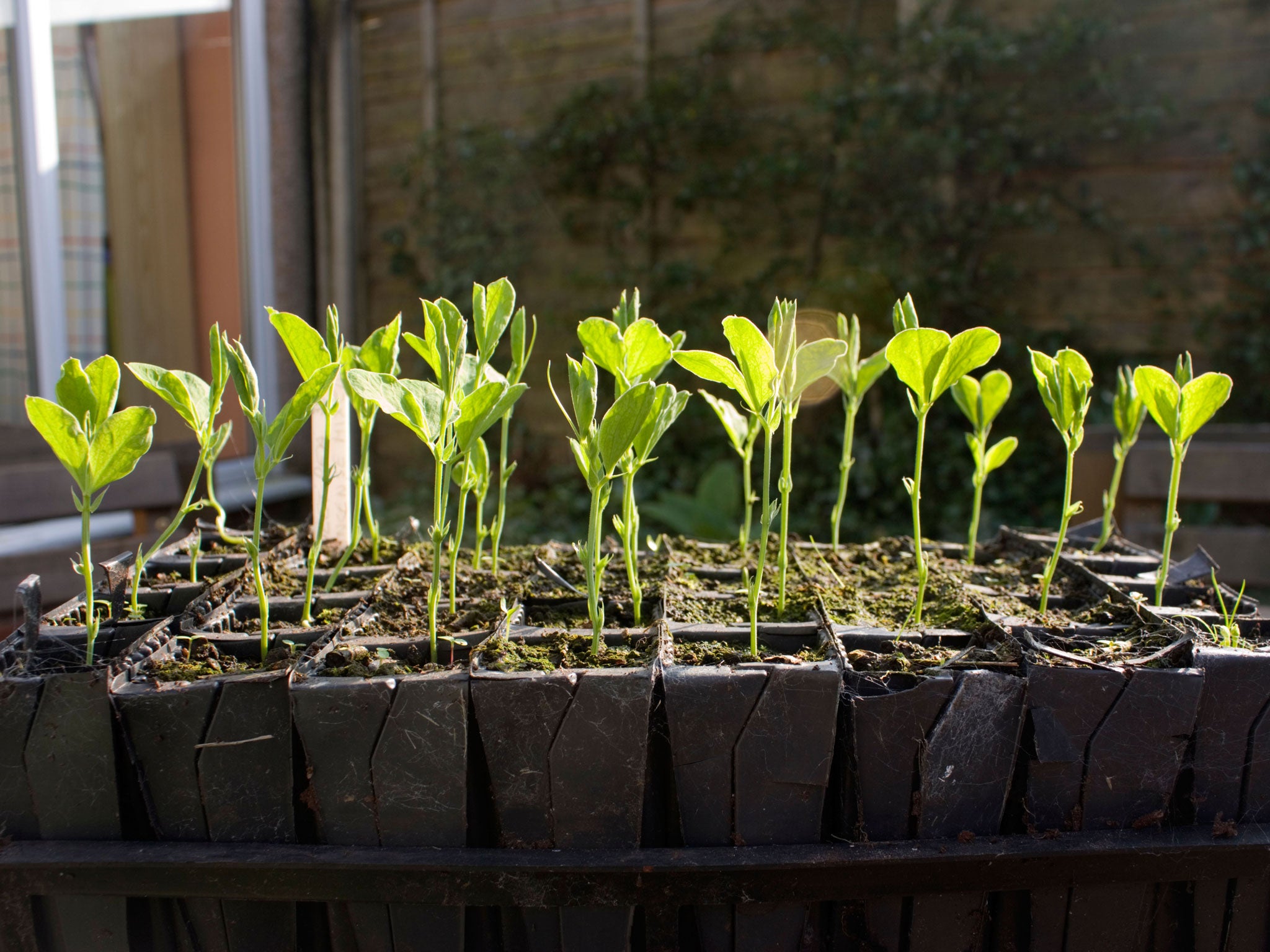Anna Pavord: 'Winter is the perfect time to start seeds indoors in preparation for the spring'
Our gardening correspondent has built up the fire and surrounded herself with seed catalogues

Primroses are in bloom all over the garden and in the lanes around. Or at least in those bits of the lanes that still have banks. There were some serious slumps and collapses during the torrential rains of January. There are few houses here and none of them have flooded, but it's fortunate that nobody in our valley needed help in a hurry: what with landslides, fallen trees, and the stream deciding it was the Amazon, there were too many occasions when nobody could get in or out of our valley.
So we built up the fire and I surrounded myself with seed catalogues. It's not always easy for gardeners to be optimistic in the dark days of winter. But I thought, if the primroses can do it, then so can I. There was even a big yellow bloom on the tree peony. In January! I've stopped saying to people how extraordinary it's been, this winter.
The ground is still too sodden to sow anything outside, but on windowsills or in greenhouses, it'll soon be time to start off aubergines and broad beans, cima di rapa, chard, chillies, cucumber, kale, peas for podding or pea tips, peppers, radish, salad crops (such as corn salad, lettuce, mizuna and rocket), salsola, spinach and tomato.
And that's just the veg. Chervil, chives, coriander and dill will all need to be added to the list. And we haven't even begun to think of the flowers that might benefit from a February start: ammi and the purple-leaved cow parsley Anthriscus sylvestris "Ravenswing", snapdragons and columbine, cornflowers and honeywort, cleomes and climbing cobaea, larkspur and leonotis, poppies and the Chinese lantern (Physalis alkekengi). And sweet peas. Especially sweet peas, unless you sowed them in autumn and are now in the happy position of looking at pots of fat, expectant seedlings.
I never was. Mice always dug up and ate the seeds whenever I tried autumn sowings. So, long ago, I switched to spring. This isn't a race. Sweet peas are just as good slightly later in the summer, as they are early on. But you can't do without them, because, as cut flowers, you can scarcely ever buy them. They don't last long enough.
Should you soak the seed before sowing? Some growers say that this does more harm than good and puts the seed under needless stress. Some though still swear that it helps seeds germinate. I've never soaked. Nor chipped the seed, but if you want to try this, concentrate on blue and maroon varieties which are more hard-seeded than other types. Aim for a point opposite the eye of the seed and either nick the seed coat with a sharp knife or rub it with a file or coarse sandpaper.
If you want to grow plants singly up canes, cordon style, sow seed singly in tubes of compost – the insides of loo rolls are ideal. If your sights are set lower (mine are), poke 3-5 seeds in an 8cm/3in pot of compost, water them and cover them with a pane of glass and also newspaper, which keeps out the light until the seeds have germinated. You may also have to use wire netting to keep out mice.
I'm not looking for exhibition blooms, just lots of well-scented flowers to pick. So I work on the principle that sweet peas need to grow hard, and set the seeds on shelves in our unheated greenhouse. A cold frame would do as well, or a sheltered place under a wall outside. Whip off the newspaper as soon as you see the first shoots. This depends on the amount of warmth the seeds get, but it may happen after only a week. If you are germinating the seeds on a windowsill in the house, put the pots outside when you see the first shoots. If you keep them inside, the plants will grow weak and spindly.
Pinch out the tops of the plants when they are about 20cm/4in high. Plant them before the roots hang out too far from the bottom of the pot. By this time, there should be fat new shoots sprouting from the main stem. Just plant the whole pot together, and support them with netting, brushwood or canes. It's easier to get the supports in before you plant rather than after. I use roundels made from fence wire.
There is one other thing that needs seeing to now: the ground where they are to grow. Sweet peas, for all their dowagery, pink and mauve looks have appetites like sumo wrestlers. They need muck. Make sure there is plenty under the place where they will be growing. They will also make a good job of converting dead mice from your mousetraps. Mouse to "Midnight" (Chiltern Seeds £1.95). Cinderella herself couldn't do better.
Subscribe to Independent Premium to bookmark this article
Want to bookmark your favourite articles and stories to read or reference later? Start your Independent Premium subscription today.

Join our commenting forum
Join thought-provoking conversations, follow other Independent readers and see their replies